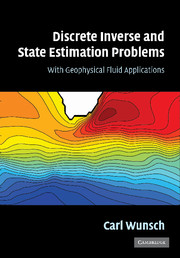2 - Basic machinery
Published online by Cambridge University Press: 28 October 2009
Summary
Background
The purpose of this chapter is to record a number of results that are useful in finding and understanding the solutions to sets of usually noisy simultaneous linear equations and in which formally there may be too much or too little information. A lot of the material is elementary; good textbooks exist, to which the reader will be referred. Some of what follows is discussed primarily so as to produce a consistent notation for later use. But some topics are given what may be an unfamiliar interpretation, and I urge everyone to at least skim the chapter.
Our basic tools are those of matrix and vector algebra as they relate to the solution of linear simultaneous equations, and some elementary statistical ideas — mainly concerning covariance, correlation, and dispersion. Least-squares is reviewed, with an emphasis placed upon the arbitrariness of the distinction between knowns, unknowns, and noise. The singular-value decomposition is a central building block, producing the clearest understanding of least-squares and related formulations. Minimum variance estimation is introduced through the Gauss—Markov theorem as an alternative method for obtaining solutions to simultaneous equations, and its relation to and distinction from least-squares is discussed. The chapter ends with a brief discussion of recursive least-squares and estimation; this part is essential background for the study of time-dependent problems in Chapter 4.
- Type
- Chapter
- Information
- Discrete Inverse and State Estimation ProblemsWith Geophysical Fluid Applications, pp. 19 - 151Publisher: Cambridge University PressPrint publication year: 2006
- 1
- Cited by

